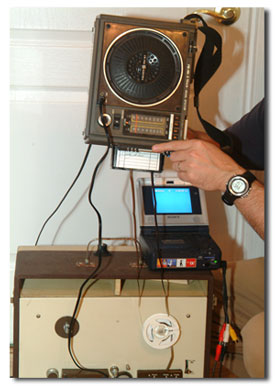 |
Let us make magic for you! |
| 803.270.4159 | |
| jeff@idsinc.tech | |
| |
| Home Digital Bulletin Boards AV Equipment Rentals Video Conferencing Video/Event Productions | |||
| Personal History Preservation Media Conversion Our Clients Say Business Affiliates |
|
|
Converting and Preserving 8 Track Tapes
Do you need to convert an 8 Track tape to CD? Call CSRA MultimediaAre you old enough to remember listening to 8 Track tapes? If you had a car or truck in the 1960s or 1970s you probably had boxes of them under the seat that you listened to for hours when you went to hang out with your buddies or to spend quality time with that special someone.  8 Track tapes were a clunky, messy, and so-so quality way to have to enjoy music. Still, they were the first technology available that allowed you to enjoy music in your car that wasn’t your favorite AM radio station. Maybe you still have an 8 Track tape or two that was really special. However, that particular group never made it really big, or perhaps you haven’t been able to find it on CD. You’ve really tried to find it on amazon.com or ebay.com, but no luck. Or here’s an unusual situation: maybe you had an 8 Track tape recorder in the 1970s, and maybe you used this recorder to make tapes of your kids being silly. Maybe they spent time singing while grandpa played the piano. Now you’re kids are grown and grandpa’s been gone for year. Wouldn’t it be fabulous to be able to enjoy those sounds again? Here’s a true story of what we did for one of our clients. This client called and stated that she had an 8 track tape she had recorded in the 1970s of her children that was broken. She asked if we could fix it. We told her yes, thinking that the tape would be dangling out of the 8 track cartridge and should be a straightforward, splice, play, and convert process. When she got to our location, she had the 8 Track tape cartridge in one hand, and the other hand was holding the actual tape wound around a box! The photo above was the actual cartridge. This saga still reigns supreme as the most unusual requests that we have gotten! The company owner, Jeff Siler, Googled "8 Track tape mechanisms" to learn how the tape actually worked. We learned that the tape is wound on a simple spool in the cartridge housing and rewinds on the outer edge of the spool as the tape is fed from the inner edge of the spool.
We thought it would be impractical to manually rewind the tape on this spool and get it to play properly. Dr. Siler employed a method that he burrowed from Pink Floyd’s documentary movie on the making of their “Dark Side of the Moon” LP. That album was produced long before computers and audio software were created to produce looping sound (an audio segment that played over and over). They used a length of audio tape with the sound sequence had the ends taped together and was played or a reel to reel tape recorder, while the other end of this tape loop was supported by a broomstick – this allowed a short run of tape to loop over and over to create the desired music track. The photo below shows how we rigged this to get the tape digitized.  Finally, all of the audio on the tape was digitized, and then edited into a CD. Our client was so happy that hugs and tears were given along with her payment. It was a true pleasure and honor to give this special client something back that she had literally not been able to listen to for 30 years. How can you put a price tag on something like that? Contact CSRA Multimedia if you happen to want an 8 Track tape converted to a CD. You’ll be glad you did. |
|
|
Digital Banner Systems
Digital Bulletin Boards
AV Equipment Rentals Video Conferencing
Video/Event Productions
|
Personal History Preservation Media Conversion Our Clients Say Business Affiliates
© 2021 Interactive Display Systems, Inc. | 236 Catawba Trl | Lexington, SC 29072 | 803.270.4159